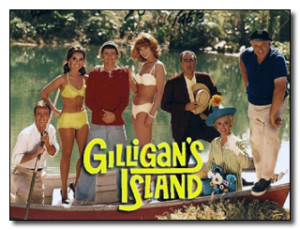The wave of Baby Boomer retirements is beginning. I’ve been writing and speaking about exit planning nationally for the last ten years, (you can download my free eBook on the subject here), but the inevitability of the demographics is gaining momentum.
Today, Boomers in their late 60s are starting to sell the businesses they’ve built over the last 30 years or so. They are just the tip of the iceberg. Millions more are steadily approaching their career finish lines at a rate of hundreds every day.
Exit Planning is a new discipline, developed to meet a massive market need. Unfortunately, like any new service offering, there are a lot of people who use the term without fully understanding it, or in hopes that it will associate them with a growing field of professional practice.
Accountants say they do exit planning when they help clients structure their business and personal holdings to minimize the bite of the IRS.
Estate attorneys say they do exit planning when they protect assets and document transfers of inheritances.
Wealth managers say they do exit planning when they provide retirement projections and validate lifestyle assumptions.
Consultants say they do exit planning when they recommend ways to increase the value of the business, presumably maximizing the proceeds from a sale.
Business brokers say they do exit planning when they value and list a company for acquisition.
Insurance brokers say they do exit planning when they write policies to protect owners, their families and their companies against premature departures, or the absence of key employees.
Which of these professionals really do exit planning? There are two answers:
- All of them
- None of them
 Exit planning is the process of developing a business owner’s strategy for what may be the biggest financial transaction of his or her life…the transfer of the business. That strategy may be a succession to the next generation of family. It could be a sale to employees. It may be a sale to another entrepreneur, or acquisition by a larger company. In some cases, it could require an orderly dissolution.
Exit planning is the process of developing a business owner’s strategy for what may be the biggest financial transaction of his or her life…the transfer of the business. That strategy may be a succession to the next generation of family. It could be a sale to employees. It may be a sale to another entrepreneur, or acquisition by a larger company. In some cases, it could require an orderly dissolution.
In every case, it involves tax, legal, financial, operational and risk management expertise. No one practitioner (including me) has all the knowledge required for every aspect of the plan. Exit planning, in the true sense of the word, is coordinating all those skills so that they work together for a single objective.
Let’s say, for example, you run a warehouse with delivery services. You decide to make it as efficient as possible.
- You tell the purchasing manager to only order product when pricing and inbound freight are the least expensive.
- You tell the warehouse manager to develop a system for picking orders with methods that require the least amount of labor.
- You tell the shipping department to pack up orders using the least possible amount of material.
- You tell the dispatcher to plan routes for times with the least traffic and the lowest fuel use.
- You tell the sales department to promise the customer anything that will close the sale.
Now, without letting any of these people talk to each other, you announce that tomorrow you are implementing all their results simultaneously. You go home dreaming about how amazingly profitable your business is about to become.
You don’t have to be a distribution expert to know what is going to happen. The uncoordinated plans are going to explode when combined. You’ve just come up with a great way to go out of business.
Now, what if you told one manager that your overall goal is to sell more product and give excellent service, so customers would become loyal buyers and the company will increase revenues and profits? Then you had the other managers report to him, so that all of their plans would compliment the overall objective.
That’s what an exit planner does.
If you enjoy Awake at 2 o’clock, please share it with other business owners.
 Bob is calculating what the brokerage industry calls “Seller’s Discretionary Benefits” or SDE. While it is a legitimate way to look at the full value of business ownership, ball park valuations of 4-5 times pre-tax earnings don’t apply to that calculation. Cash flow expensed for benefits (rather than dropping to a taxable bottom line), isn’t included in those earnings multiples. The traditional multiple for a small business sale averages 2.5 time SDE, or half of what Bob is estimating. We are immediately reducing the likely price to something like $1,250,000.
Bob is calculating what the brokerage industry calls “Seller’s Discretionary Benefits” or SDE. While it is a legitimate way to look at the full value of business ownership, ball park valuations of 4-5 times pre-tax earnings don’t apply to that calculation. Cash flow expensed for benefits (rather than dropping to a taxable bottom line), isn’t included in those earnings multiples. The traditional multiple for a small business sale averages 2.5 time SDE, or half of what Bob is estimating. We are immediately reducing the likely price to something like $1,250,000. Perhaps the most amusing application was in “Gilligan’s Island.” The seven castaways fill their assignments well. There’s Gilligan (Sloth), the Skipper too (Wrath). The millionaire (Thurston Howell — Greed) and his wife (Gluttony). The movie star (Ginger — Lust, of course); The professor (Pride) and Mary Ann (Envy), here on Gilligan’s Isle (Hell?)
Perhaps the most amusing application was in “Gilligan’s Island.” The seven castaways fill their assignments well. There’s Gilligan (Sloth), the Skipper too (Wrath). The millionaire (Thurston Howell — Greed) and his wife (Gluttony). The movie star (Ginger — Lust, of course); The professor (Pride) and Mary Ann (Envy), here on Gilligan’s Isle (Hell?) Pride has characteristics that are easily recognizable in some owners. In meetings, do you do all the talking? Do you complain that you are the only one who has new ideas? Does everyone come to you for the solutions to any and every problem? Worse yet, do you insist on it? Do you reprimand employees for making decisions that, while they might work, aren’t exactly the way you would have done it?
Pride has characteristics that are easily recognizable in some owners. In meetings, do you do all the talking? Do you complain that you are the only one who has new ideas? Does everyone come to you for the solutions to any and every problem? Worse yet, do you insist on it? Do you reprimand employees for making decisions that, while they might work, aren’t exactly the way you would have done it? Sloth in your business isn’t a disinclination to put in the effort. It’s the sin of settling for “good enough.”
Sloth in your business isn’t a disinclination to put in the effort. It’s the sin of settling for “good enough.”